The Audiovisual Assessment of Monocultural Vegetation Based on Facial Expressions
Abstract
1. Introduction
- (1)
- Determine via audiovisual interactions the significant differences in human facial expression when exposed to different monocultural vegetations.
- (2)
- Assess the difference and relationship between human soundscape and visual perception of each monocultural vegetation.
- (3)
- Explore the relationship between soundscape perception of monocultural vegetation and facial expression.
2. Materials and Methods
2.1. Selection Criteria and Sound Sources
Study Area
2.2. Video and Sound Recording
2.3. Research Participants
2.4. Laboratory Experiments
Questionnaire Design
2.5. Analysis
3. Results
3.1. Analysis of Monocultural Vegetation on Human Facial Expressions
3.2. Relationship Between Soundscape and Visual Perception of Monocultural Vegetation
3.3. Relationship Between Soundscape Perception and Facial Expression
4. Discussion
4.1. Gender as an Influence on Facial Expressions
4.2. Research Significance
4.3. Application and Recommendations
4.4. Limitation and Future Studies
5. Conclusions
Author Contributions
Funding
Data Availability Statement
Conflicts of Interest
References
- Oriola, E.O. Forestry for Sustainable Development in Nigeria. Int. J. Afr. Stud. 2009, 1, 11–16. [Google Scholar]
- Ayeni, A.O. Forestry in Nigeria: A Brief Historical Overview, Phases of Development and Present Challenges; AARSE Special Publication: Lagos, Nigeria, 2013. [Google Scholar]
- Nwankwo, M.; Meng, Q.; Yang, D.; Liu, F. Effects of Forest on Birdsong and Human Acoustic Perception in Urban Parks: A Case Study in Nigeria. Forests 2022, 13, 994. [Google Scholar] [CrossRef]
- Terwase, I.T.; Abdul-Talib, A.-N.; Edogbanya, A.; Zengeni, K.T.; Yerima, H.M.; Ibrahim, M.B. Obudu Cattle Ranch: A Tourist Destination in Nigeria. Res. Humanit. Soc. Sci. 2015, 5, 67–71. [Google Scholar]
- Ugwukah, A.; Obomanu, V.S.O. Tourism and Economic Development in Nigeria: A Critical Assessment of the Obudu Mountain Resort, Cross River State 2008–2018. J. Tour. Hosp. Sports 2020, 48, 15–25. [Google Scholar] [CrossRef]
- Nomishan, T.S.; Andzenge, O.J.; Aarga, I. Interrogating the Tourism Industry of Benue State: The Past and Present of Makurdi Zoological Garden and Ikyogen Cattle Ranch, Benue State, Nigeria. SSRN Electron. J. 2020, 9, 1–14. [Google Scholar] [CrossRef]
- Odemero, A.F. Enterprise Shift Decision among Natural Rubber Plantation Owners in The Rain Forest Zone of Delta State, Nigeria. J. Biol. Agric. Healthc. 2013, 3, 39–44. [Google Scholar]
- Brockerhoff, E.G.; Barbaro, L.; Castagneyrol, B.; Forrester, D.I.; Gardiner, B.; González-Olabarria, J.R.; Lyver, P.O.B.; Meurisse, N.; Oxbrough, A.; Taki, H.; et al. Forest Biodiversity, Ecosystem Functioning and the Provision of Ecosystem Services. Biodivers. Conserv. 2017, 26, 3005–3035. [Google Scholar] [CrossRef]
- Gibson, L.; Lee, T.M.; Koh, L.P.; Brook, B.W.; Gardner, T.A.; Barlow, J.; Peres, C.A.; Bradshaw, C.J.A.; Laurance, W.F.; Lovejoy, T.E.; et al. Primary Forests Are Irreplaceable for Sustaining Tropical Biodiversity. Nature 2011, 478, 378–381. [Google Scholar] [CrossRef]
- Ayanlade, A.; Drake, N. Forest Loss in Different Ecological Zones of the Niger Delta, Nigeria: Evidence from Remote Sensing. GeoJournal 2016, 81, 717–735. [Google Scholar] [CrossRef]
- Akanni Oluyole, K. The Effect of Weather on Cocoa Production in Different Agro-Ecological Zones in Nigeria. World J. Agric. Sci. 2010, 6, 609–615. [Google Scholar]
- Tianhong, L.; Wenkai, L.; Zhenghan, Q. Variations in Ecosystem Service Value in Response to Land Use Changes in Shenzhen. Ecol. Econ. 2010, 69, 1427–1435. [Google Scholar] [CrossRef]
- Wang, H.; Hou, L.; Liu, Y.; Liu, K.; Zhang, L.; Huang, F.; Wang, L.; Rashid, A.; Hu, A.; Yu, C. Horizontal and Vertical Gene Transfer Drive Sediment Antibiotic Resistome in an Urban Lagoon System. J. Environ. Sci. 2021, 102, 11–23. [Google Scholar] [CrossRef]
- Shugart, H.H.; Saatchi, S.; Hall, F.G. Importance of Structure and Its Measurement in Quantifying Function of Forest Ecosystems. J. Geophys. Res. Biogeosciences 2010, 115, G00E13. [Google Scholar] [CrossRef]
- Lindenmayer, D.B.; Laurance, W.F.; Franklin, J.F. Global Decline in Large Old Trees. Science 2012, 338, 1305–1306. [Google Scholar] [CrossRef]
- Sunderland, T.; Abdoulaye, R.; Ahammad, R.; Asaha, S.; Baudron, F.; Deakin, E.; Duriaux, J.Y.; Eddy, I.; Foli, S.; Gumbo, D.; et al. A Methodological Approach for Assessing Cross-Site Landscape Change: Understanding Socio-Ecological Systems. For. Policy Econ. 2017, 84, 83–91. [Google Scholar] [CrossRef]
- Ahammad, R.; Stacey, N.; Sunderland, T.C.H. Use and Perceived Importance of Forest Ecosystem Services in Rural Livelihoods of Chittagong Hill Tracts, Bangladesh. Ecosyst. Serv. 2019, 35, 87–98. [Google Scholar] [CrossRef]
- Ulrich, R.S. Natural Versus Urban Scenes: Some Psychophysiological Effects. Environ. Behav. 1981, 13, 523–556. [Google Scholar] [CrossRef]
- Ulrich, R.S.; Simons, R.F.; Losito, B.D.; Fiorito, E.; Miles, M.A.; Zelson, M. Stress Recovery during Exposure to Natural and Urban Environments. J. Environ. Psychol. 1991, 11, 201–230. [Google Scholar] [CrossRef]
- Pearson, D.G.; Craig, T.; Berman, M.G. The Great Outdoors? Exploring the Mental Health Benefits of Natural Environments. Front. Psychol. 2014, 5, 1178. [Google Scholar] [CrossRef] [PubMed]
- Murage, P.; Anton, B.; Chiwanga, F.; Picetti, R.; Njunge, T.; Hassan, S.; Whitmee, S.; Falconer, J.; Waddington, H.S.; Green, R. Impact of Tree-Based Interventions in Addressing Health and Wellbeing Outcomes in Rural Low-Income and Middle-Income Settings: A Systematic Review and Meta-Analysis. Lancet Planet. Health 2025, 9, e157–e168. [Google Scholar] [CrossRef] [PubMed]
- Song, I.; Baek, K.; Kim, C.; Song, C. Effects of Nature Sounds on the Attention and Physiological and Psychological Relaxation. Urban For. Urban Green. 2023, 86, 127987. [Google Scholar] [CrossRef]
- Collado, S.; Staats, H.; Corraliza, J.A.; Hartig, T. Restorative Environments and Health. In Handbook of Environmental Psychology and Quality of Life Research; Springer: Cham, Switzerland, 2017; pp. 127–148. [Google Scholar] [CrossRef]
- Ratcliffe, E. Sound and Soundscape in Restorative Natural Environments: A Narrative Literature Review. Front. Psychol. 2021, 12, 570563. [Google Scholar] [CrossRef]
- Aletta, F.; Oberman, T.; Kang, J. Associations between Positive Health-Related Effects and Soundscapes Perceptual Constructs: A Systematic Review. Int. J. Environ. Res. Public Health 2018, 15, 2392. [Google Scholar] [CrossRef]
- Buxton, R.T.; Pearson, A.L.; Allou, C.; Fristrup, K.; Wittemyer, G. A Synthesis of Health Benefits of Natural Sounds and Their Distribution in National Parks. Proc. Natl. Acad. Sci. USA 2021, 118, e2013097118. [Google Scholar] [CrossRef]
- Lu, Y.; Hasegawa, Y.; Tan, J.K.A.; Lau, S.K. Effect of Audio-Visual Interaction on Soundscape in the Urban Residential Context: A Virtual Reality Experiment. Appl. Acoust. 2022, 192, 108717. [Google Scholar] [CrossRef]
- Preis, A.; Kociński, J.; Hafke-Dys, H.; Wrzosek, M. Audio-Visual Interactions in Environment Assessment. Sci. Total Environ. 2015, 523, 191–200. [Google Scholar] [CrossRef]
- Hong, J.Y.; Jeon, J.Y. Designing Sound and Visual Components for Enhancement of Urban Soundscapes. J. Acoust. Soc. Am. 2013, 134, 2026–2036. [Google Scholar] [CrossRef] [PubMed]
- Kang, J.; Schulte-Fortkamp, B. Soundscape and the Built Environment; CRC Press: Boca Raton, FL, USA, 2016; pp. 1–301. [Google Scholar] [CrossRef]
- Schulte-Fortkamp, B.; Fiebig, A. Impact of Soundscape in Terms of Perception. In Soundscape and the Built Environment; CRC Press: Boca Raton, FL, USA, 2016; pp. 69–88. [Google Scholar] [CrossRef]
- Kang, J. From Understanding to Designing Soundscapes. Front. Archit. Civ. Eng. China 2010, 4, 403–417. [Google Scholar] [CrossRef]
- ISO. ISO 12913-1:2014-Acoustics—Soundscape-Part 1: Definition and Conceptual Framework. Available online: https://www.iso.org/standard/52161.html (accessed on 9 June 2022).
- Brown, A.L. Soundscapes and Environmental Noise Management. Noise Control Eng. J. 2010, 58, 493–500. [Google Scholar] [CrossRef]
- Brown, A.L. Advancing the Concepts of Soundscapes and Soundscape Planning. In Proceedings of the Acoustics 2011: Annual Conference of the Australian Acoustical Society, Gold Coast, Australia, 2–4 November 2011. [Google Scholar]
- Aletta, F.; Kang, J.; Axelsson, Ö. Soundscape Descriptors and a Conceptual Framework for Developing Predictive Soundscape Models. Landsc. Urban Plan. 2016, 149, 65–74. [Google Scholar] [CrossRef]
- Southworth, M. The Sonic Environment of Cities. Environ. Behav. 1969, 1, 49–70. [Google Scholar] [CrossRef]
- Raman, T.L.; Aziz, N.A.A.; Yaakob, S.S.N. The Effects of Different Natural Environment Influences on Health and Psychological Well-Being of People: A Case Study in Selangor. Sustainability 2021, 13, 8597. [Google Scholar] [CrossRef]
- Wang, P.; He, Y.; Yang, W.; Li, N.; Chen, J. Effects of Soundscapes on Human Physiology and Psychology in Qianjiangyuan National Park System Pilot Area in China. Forests 2022, 13, 1461. [Google Scholar] [CrossRef]
- Bai, Z.; Zhang, S. Effects of Different Natural Soundscapes on Human Psychophysiology in National Forest Park. Sci. Rep. 2024, 14, 17462. [Google Scholar] [CrossRef]
- Molholm, S.; Ritter, W.; Murray, M.M.; Javitt, D.C.; Schroeder, C.E.; Foxe, J.J. Multisensory Auditory–Visual Interactions during Early Sensory Processing in Humans: A High-Density Electrical Mapping Study. Cogn. Brain Res. 2002, 14, 115–128. [Google Scholar] [CrossRef]
- He, Y.; Yang, T.; He, C.; Sun, K.; Guo, Y.; Wang, X.; Bai, L.; Xue, T.; Xu, T.; Guo, Q.; et al. Effects of Audiovisual Interactions on Working Memory: Use of the Combined N-Back + Go/NoGo Paradigm. Front. Psychol. 2023, 14, 1080788. [Google Scholar] [CrossRef]
- Bian, Q.; Zhang, C.; Wang, C.; Yin, L.; Han, W.; Zhang, S. Evaluation of Soundscape Perception in Urban Forests Using Acoustic Indices: A Case Study in Beijing. Forests 2023, 14, 1435. [Google Scholar] [CrossRef]
- Hedblom, M.; Knez, I.; Ode Sang, A.; Gunnarsson, B. Evaluation of Natural Sounds in Urban Greenery: Potential Impact for Urban Nature Preservation. R. Soc. Open Sci. 2017, 4, 170037. [Google Scholar] [CrossRef]
- Li, H.; Lau, S.K. A Review of Audio-Visual Interaction on Soundscape Assessment in Urban Built Environments. Appl. Acoust. 2020, 166, 107372. [Google Scholar] [CrossRef]
- Carles, J.L.; Barrio, I.L.; De Lucio, J.V. Sound Influence on Landscape Values. Landsc. Urban Plan. 1999, 43, 191–200. [Google Scholar] [CrossRef]
- Pheasant, R.J.; Fisher, M.N.; Watts, G.R.; Whitaker, D.J.; Horoshenkov, K.V. The Importance of Auditory-Visual Interaction in the Construction of “Tranquil Space”. J. Environ. Psychol. 2010, 30, 501–509. [Google Scholar] [CrossRef]
- Zhu, C.; Feng, X.; Luo, J.; Fu, S.; Li, T.; Wang, W.; Li, X. Effects of Different Audiovisual Landscapes in Bamboo Forest Space on Physical and Mental Restorative Potential of University Students: Based on Eye-Tracking Experiments. Front. For. Glob. Change 2024, 7, 1415514. [Google Scholar] [CrossRef]
- Ekman, P.; Friesen, W.V. Unmasking the Face: A Guide to Recognizing Emotions from Facial Expressions; Malor Books: Cambridge, MA, USA, 1975. [Google Scholar]
- Ekman, P.; Friesen, W.V. Facial Action Coding System; PsycTESTS Dataset; APA: Washington, DC, USA, 2019. [Google Scholar] [CrossRef]
- Schmidt, K.L.; Cohn, J.F. Human Facial Expressions as Adaptations:Evolutionary Questions in Facial Expression Research. Am. J. Phys. Anthr. 2001, 116 (Suppl. S33), 3. [Google Scholar] [CrossRef]
- Adolphs, R. Social Cognition and the Human Brain. Trends Cogn. Sci. 1999, 3, 469–479. [Google Scholar] [CrossRef]
- Dawel, A.; Miller, E.J.; Horsburgh, A.; Ford, P. A Systematic Survey of Face Stimuli Used in Psychological Research 2000–2020. Behav. Res. Methods 2022, 54, 1889–1901. [Google Scholar] [CrossRef] [PubMed]
- Fridlund, A.J.; Crivelli, C.; Jarillo, S.; Fernández-Dols, J.-M.; Russell, J.A. Facial Expressions. In Encyclopedia of Evolutionary Psychological Science; Springer: Cham, Switzerland, 2019; pp. 1–7. [Google Scholar] [CrossRef]
- Santhoshkumar, R.; Kalaiselvi Geetha, M. Deep Learning Approach for Emotion Recognition from Human Body Movements with Feedforward Deep Convolution Neural Networks. Procedia Comput. Sci. 2019, 152, 158–165. [Google Scholar] [CrossRef]
- Tarnowski, P.; Kołodziej, M.; Majkowski, A.; Rak, R.J. Emotion Recognition Using Facial Expressions. Procedia Comput. Sci. 2017, 108, 1175–1184. [Google Scholar] [CrossRef]
- Hu, X.; Meng, Q.; Yang, D.; Li, M. Facial Expression Recognition, a Predictive Tool for Perceiving Urban Open Space Environments under Audio-Visual Interaction. Energy Build. 2024, 318, 114456. [Google Scholar] [CrossRef]
- Sowunmi, M.A. The Significance of the Oil Palm (Elaeis guineensis Jacq.) in the Late Holocene Environments of West and West Central Africa: A Further Consideration. Veg. Hist. Archaeobotany 1999, 8, 199–210. [Google Scholar] [CrossRef]
- Okolo, C.C.; Okolo, E.; Nnadi, A.L.; Obikwelu, F.E.; Obalum, S.E.; Igwe, C. The Oil Palm (Elaeis guineensis Jacq): Nature’s Ecological Endowment to Eastern Nigeria. Agro-Science 2019, 18, 48. [Google Scholar] [CrossRef]
- Nkemdirim, I.B. An Insight into The Essence of Igbo Plant Symbols. In Representing African Indigenous Knowledge System; Rural Research & Advocacy Society: Owerri, Nigeria, 2018. [Google Scholar]
- Hornibrook, J.; Lin, E.; Ormond, T. Using the IPhone for Voice Recordings in Laryngology. Otolaryngol.–Head. Neck Surg. 2011, 145, 58–59. [Google Scholar] [CrossRef]
- Lin, E.; Hornibrook, J.; Ormond, T. Evaluating IPhone Recordings for Acoustic Voice Assessment. Folia Phoniatr. Logop. 2012, 64, 122–130. [Google Scholar] [CrossRef] [PubMed]
- Jia, Y.; Ma, H.; Kang, J.; Wang, C. The Preservation Value of Urban Soundscape and Its Determinant Factors. Appl. Acoust. 2020, 168, 107430. [Google Scholar] [CrossRef]
- Deng, L.; Luo, H.; Ma, J.; Huang, Z.; Sun, L.X.; Jiang, M.Y.; Zhu, C.Y.; Li, X. Effects of Integration between Visual Stimuli and Auditory Stimuli on Restorative Potential and Aesthetic Preference in Urban Green Spaces. Urban For. Urban Green. 2020, 53, 126702. [Google Scholar] [CrossRef]
- Zhao, W.; Li, H.; Zhu, X.; Ge, T. Effect of Birdsong Soundscape on Perceived Restorativeness in an Urban Park. Int. J. Environ. Res. Public Health 2020, 17, 5659. [Google Scholar] [CrossRef] [PubMed]
- Lewinski, P.; Fransen, M.L.; Tan, E.S.H. Predicting Advertising Effectiveness by Facial Expressions in Response to Amusing Persuasive Stimuli. J. Neurosci. Psychol. Econ. 2014, 7, 1–14. [Google Scholar] [CrossRef]
- Hong, J.Y.; Jeon, J.Y. The Effects of Audio–Visual Factors on Perceptions of Environmental Noise Barrier Performance. Landsc. Urban Plan. 2014, 125, 28–37. [Google Scholar] [CrossRef]
- Dores, A.R.; Barbosa, F.; Queirós, C.; Carvalho, I.P.; Griffiths, M.D. Recognizing Emotions through Facial Expressions: A Largescale Experimental Study. Int. J. Environ. Res. Public Health 2020, 17, 7420. [Google Scholar] [CrossRef]
- Yan, W.; Meng, Q.; Yang, D.; Li, M. Developing a theory of tranquility in urban public open spaces for future designs. Appl. Acoust. 2024, 217, 109824. [Google Scholar] [CrossRef]
- Jeon, J.Y.; Lee, P.J.; You, J.; Kang, J. Perceptual Assessment of Quality of Urban Soundscapes with Combined Noise Sources and Water Sounds. J. Acoust. Soc. Am. 2010, 127, 1357–1366. [Google Scholar] [CrossRef]
- Pérez-Martínez, G.; Torija, A.J.; Ruiz, D.P. Soundscape Assessment of a Monumental Place: A Methodology Based on the Perception of Dominant Sounds. Landsc. Urban Plan. 2018, 169, 12–21. [Google Scholar] [CrossRef]
- Axelsson, Ö. How to Measure Soundscape Quality. In Proceedings of the Euronoise 2015 Conference, Maastricht, The Netherlands, 31 May–3 June 2015. [Google Scholar]
- Liu, Y.; Wang, Z.; Yu, G. The Effectiveness of Facial Expression Recognition in Detecting Emotional Responses to Sound Interventions in Older Adults with Dementia. Front. Psychol. 2021, 12, 707809. [Google Scholar] [CrossRef]
- Meng, Q.; Hu, X.; Kang, J.; Wu, Y. On the Effectiveness of Facial Expression Recognition for Evaluation of Urban Sound Perception. Sci. Total Environ. 2020, 710, 135484. [Google Scholar] [CrossRef]
- Fadel, N.E. Facial Recognition Algorithms: A Systematic Literature Review. J. Imaging 2025, 11, 58. [Google Scholar] [CrossRef] [PubMed]
- Zarbakhsh, P.; Demirel, H. Low-Rank Sparse Coding and Region of Interest Pooling for Dynamic 3D Facial Expression Recognition. Signal. Image Video Process. 2018, 12, 1611–1618. [Google Scholar] [CrossRef]
- Bartlett, M.S.; Littlewort, G.; Frank, M.; Lainscsek, C.; Fasel, I.; Movellan, J. Recognizing Facial Expression: Machine Learning and Application to Spontaneous Behavior. In Proceedings of the 2005 IEEE Computer Society Conference on Computer Vision and Pattern Recognition, CVPR 2005, San Diego, CA, USA, 20–25 June 2005; Volume II, pp. 568–573. [Google Scholar] [CrossRef]
- Amor, B.B.; Drira, H.; Berretti, S.; Daoudi, M.; Srivastava, A. 4-D Facial Expression Recognition by Learning Geometric Deformations. IEEE Trans. Cybern. 2014, 44, 2443–2457. [Google Scholar] [CrossRef]
- Franěk, M.; Petružálek, J.; Šefara, D. Facial Expressions and Self-Reported Emotions When Viewing Nature Images. Int. J. Environ. Res. Public Health 2022, 19, 10588. [Google Scholar] [CrossRef]
- Franěk, M.; Petružálek, J. Viewing Natural vs. Urban Images and Emotional Facial Expressions: An Exploratory Study. Int. J. Environ. Res. Public Health 2021, 18, 7651. [Google Scholar] [CrossRef] [PubMed]
- LaFrance, M.; Hecht, M.A.; Paluck, E.L. The Contingent Smile: A Meta-Analysis of Sex Differences in Smiling. Psychol. Bull. 2003, 129, 305–334. [Google Scholar] [CrossRef]
- Hall, J.A. Nonverbal Sex Differences: Accuracy of Communication and Expressive Style; Johns Hopkins University Press: Baltimore, MD, USA, 1984; p. 207. [Google Scholar]
- Kring, A.M.; Gordon, A.H. Sex Differences in Emotion: Expression, Experience, and Physiology. J. Pers. Soc. Psychol. 1998, 74, 686–703. [Google Scholar] [CrossRef]
- Kret, M.E.; De Gelder, B. A Review on Sex Differences in Processing Emotional Signals. Neuropsychologia 2012, 50, 1211–1221. [Google Scholar] [CrossRef] [PubMed]
- Wiggert, N.; Wilhelm, F.H.; Derntl, B.; Blechert, J. Gender Differences in Experiential and Facial Reactivity to Approval and Disapproval during Emotional Social Interactions. Front. Psychol. 2015, 6, 1372. [Google Scholar] [CrossRef] [PubMed]
- McDuff, D.; El Kaliouby, R.; Kassam, K.; Picard, R. Affect Valence Inference from Facial Action Unit Spectrograms. In Proceedings of the 2010 IEEE Computer Society Conference on Computer Vision and Pattern Recognition-Workshops, CVPRW 2010, San Francisco, CA, USA, 13–18 June 2010; pp. 17–24. [Google Scholar] [CrossRef]
- Uebel, K.; Marselle, M.; Dean, A.J.; Rhodes, J.R.; Bonn, A. Urban Green Space Soundscapes and Their Perceived Restorativeness. People Nat. 2021, 3, 756–769. [Google Scholar] [CrossRef]
- Van Kamp, I.; Van Kempen, E.; Klaeboe, R.; Kruize, H.; Brown, A.L.; Lercher, P. Soundscapes, Human Restoration and Quality of Life. In Proceedings of the INTER-NOISE 2016—45th International Congress and Exposition on Noise Control Engineering: Towards a Quieter Future, Hamburg, Germany, 21–24 August 2016; pp. 1948–1958. [Google Scholar] [CrossRef]
- Benfield, J.A.; Taff, B.D.; Newman, P.; Smyth, J. Natural Sound Facilitates Mood Recovery. Ecopsychology 2014, 6, 183–188. [Google Scholar]
- Hong, J.Y.; Jeon, J.Y. Influence of Urban Contexts on Soundscape Perceptions: A Structural Equation Modeling Approach. Landsc. Urban Plan. 2015, 141, 78–87. [Google Scholar] [CrossRef]
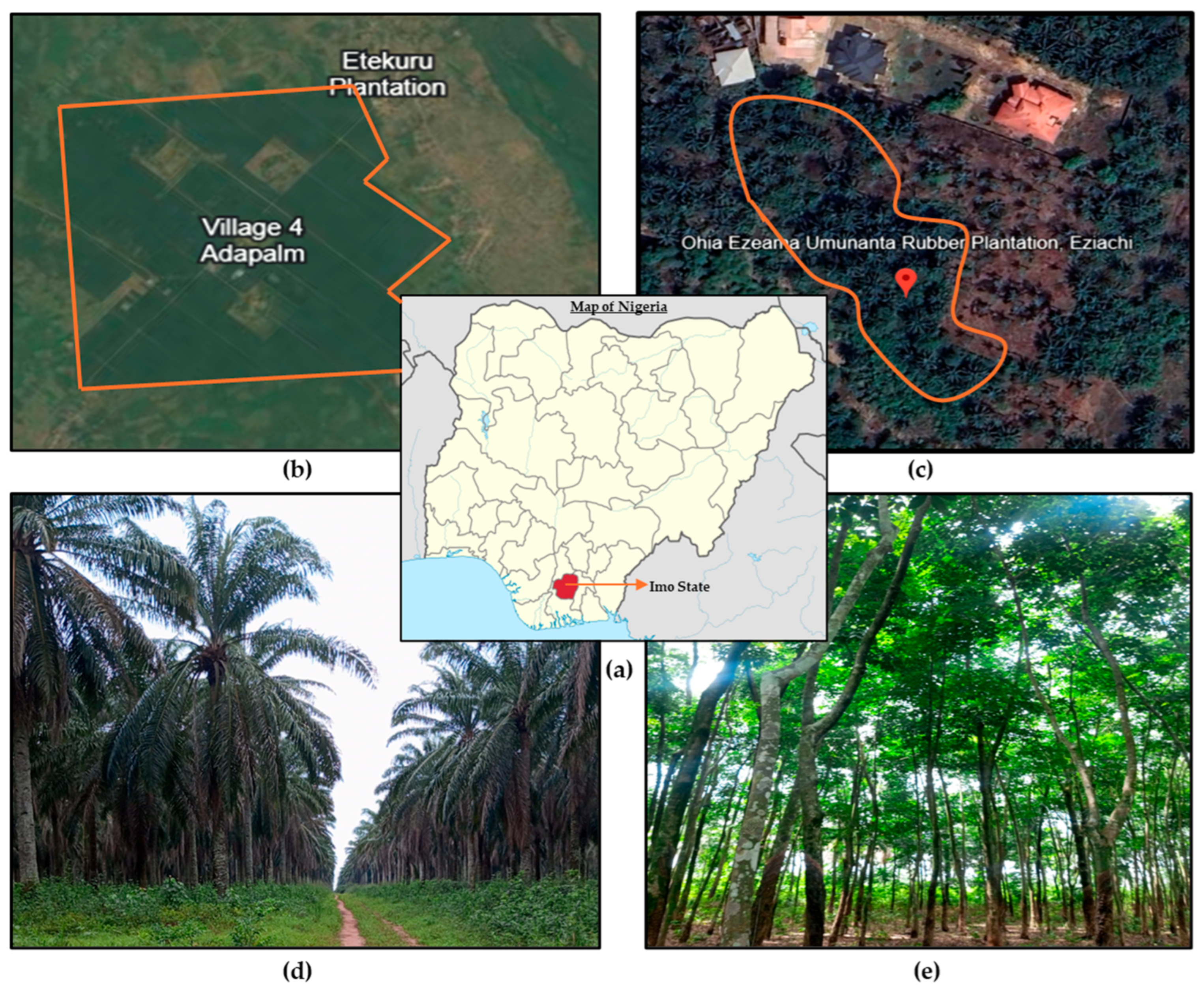

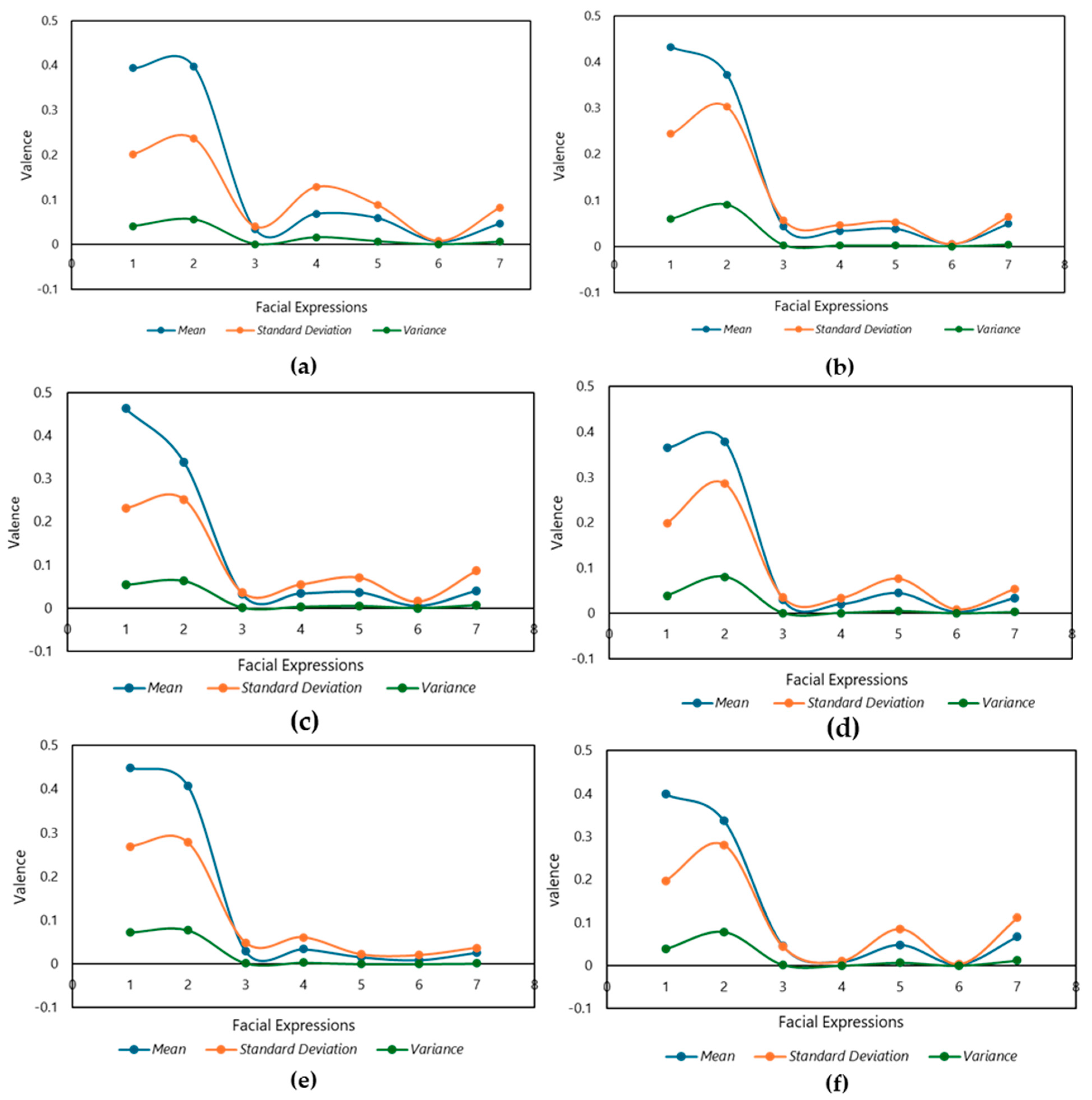
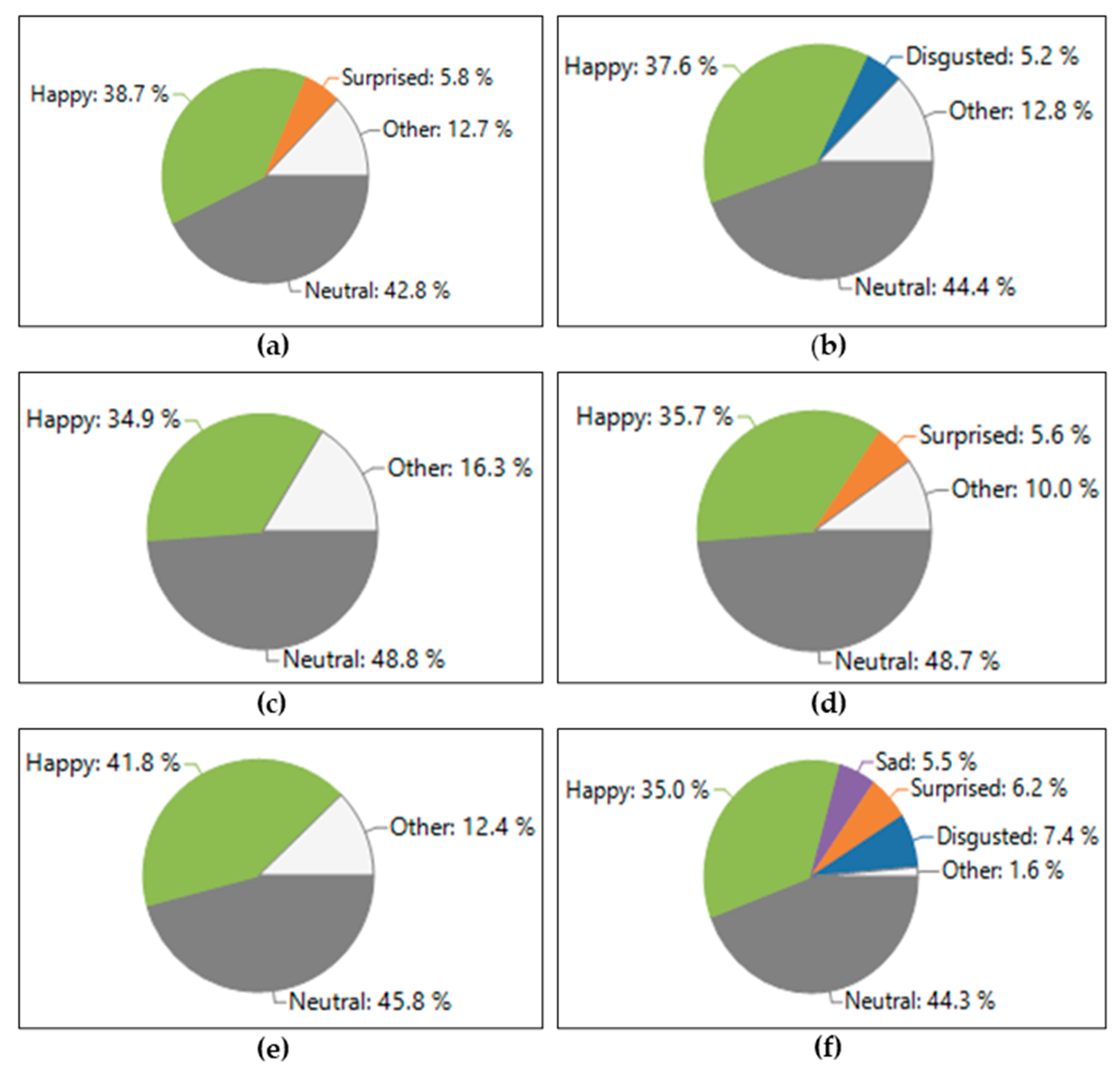
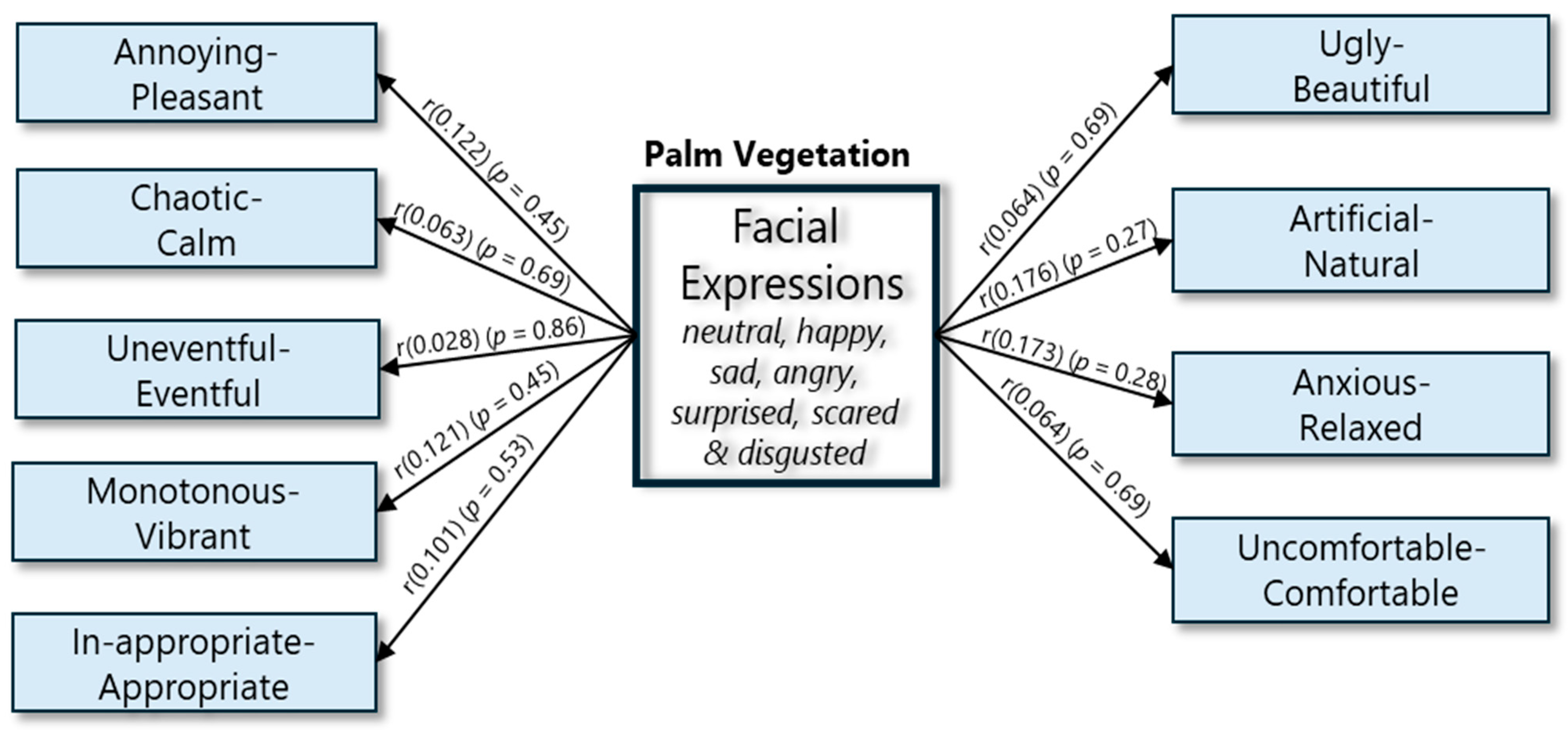
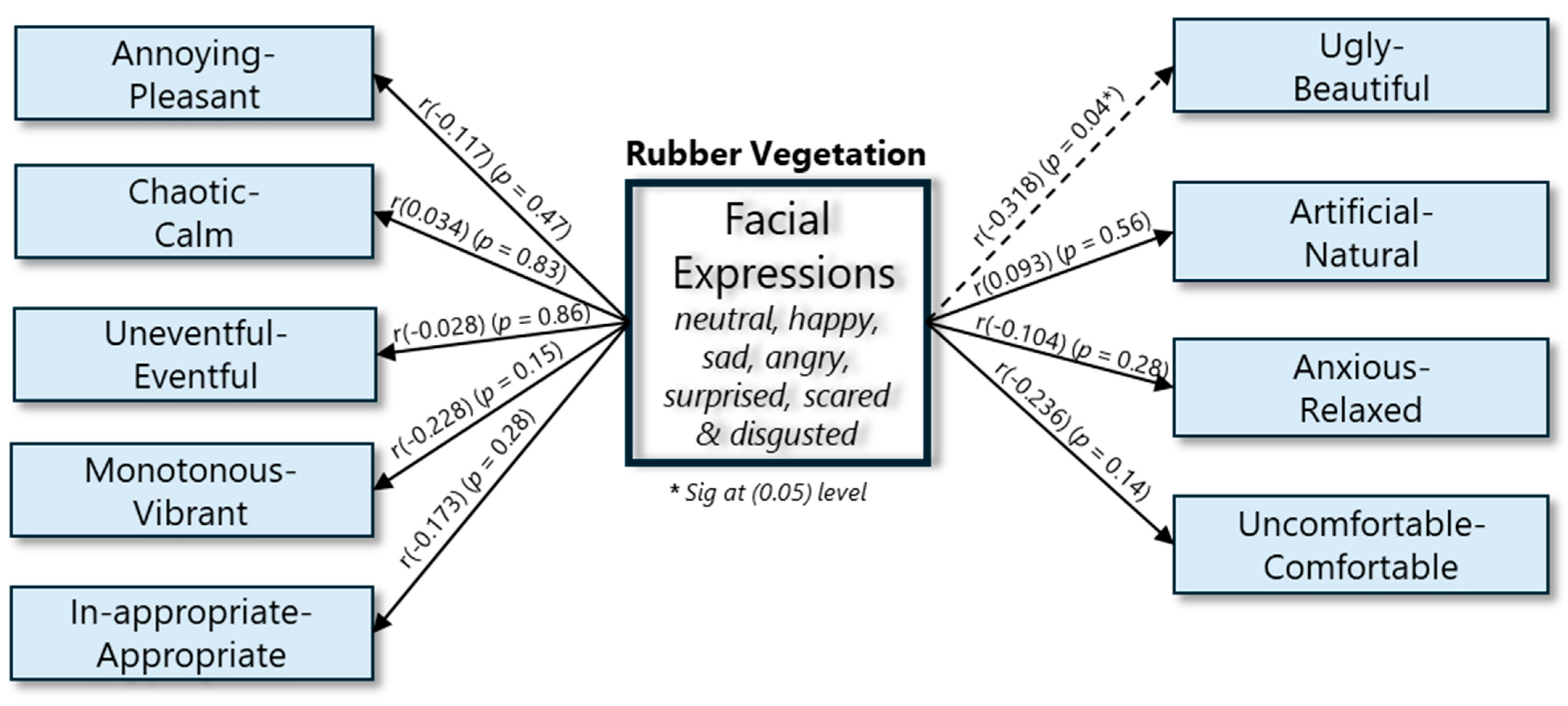
| Study Area | Economic Value | ≥75% Single Vegetation Coverage | Accessibility and Proximity | Sound Sources |
|---|---|---|---|---|
| Palm Forest (Study Area 1) | Source of Food, Raw materials for Arts and Craft. | >75% vegetation coverage | Accessible and particular to Eastern region | Francolin, Eagle and insects |
| Rubber Plantation (Study Area 2) | Timber, raw materials, natural rubber latex. | >75% vegetation coverage | Accessible and particular to Eastern region | Kite, Village weaver and insects |
| Questionnaire Design | |
|---|---|
| Section 1: Socioeconomic and Demographic | |
| Gender | Male, Female |
| Age | Up to 18 yrs, 18–30 yrs, 31–40 yrs, 41–60 yrs, above 60 yrs |
| Education | No education, secondary, undergraduate, graduate, and postgraduate. |
| Occupation | Employed, self-employed, business, student, and business |
| Section 2: Soundscape Perception | |
| On a scale of 1–5, what is your overall soundscape perception of the vegetation sound environment? | |
| (5 extremely Pleasant–1 extremely annoying) | |
| (5 extremely calm–1 extremely chaotic) | |
| (5 extremely eventful–1 extremely uneventful) | |
| (5 extremely vibrant–1 extremely monotonous) | |
| (5 extremely appropriate–1 extremely inappropriate) | |
| Section 3: Visual Perception | |
| (5 extremely beautiful–1 extremely ugly) | |
| (5 extremely natural–1 extremely artificial) | |
| (5 extremely relaxed–1 extremely anxious) | |
| (5 extremely comfortable–1 extremely uncomfortable) | |
| Descriptive Statistics | Annoying-Pleasant | Chaotic-Calm | Uneventful-Eventful | Monotonous-Vibrant | Inappropriate-Appropriate |
|---|---|---|---|---|---|
| Palm Vegetation | |||||
| Mean | 4.07 | 4.27 | 4.28 | 4.12 | 4.10 |
| SD | 0.69 | 0.59 | 0.71 | 0.51 | 0.54 |
| Variance | 0.48 | 0.35 | 0.51 | 0.26 | 0.29 |
| Skewness | −2.04 | −0.17 | −0.90 | 0.20 | 0.08 |
| Kurtosis | 9.39 | −0.46 | 1.23 | 0.77 | 0.51 |
| Rubber Vegetation | |||||
| Mean | 4.10 | 4.27 | 4.20 | 4.05 | 4.12 |
| SD | 0.59 | 0.59 | 0.72 | 0.63 | 0.51 |
| Variance | 0.34 | 0.35 | 0.52 | 0.41 | 0.27 |
| Skewness | −0.80 | −0.17 | −0.75 | −0.04 | 0.20 |
| Kurtosis | 3.55 | −0.46 | 0.85 | −0.39 | 0.77 |
| Descriptive Statistics | Ugly-Beautiful | Artificial-Natural | Anxious-Relaxed | Uncomfortable-Comfortable |
|---|---|---|---|---|
| Palm Vegetation | ||||
| Mean | 4.05 | 4.15 | 4.12 | 4.05 |
| SD | 0.59 | 0.53 | 0.61 | 0.59 |
| Variance | 0.35 | 0.28 | 0.36 | 0.35 |
| Skewness | −0.77 | 0.15 | 0.78 | −0.77 |
| Kurtosis | 3.11 | 0.43 | 3.11 | 3.11 |
| Rubber Vegetation | ||||
| Mean | 3.97 | 4.15 | 4.10 | 4.00 |
| SD | 0.65 | 0.53 | 0.62 | 0.55 |
| Variance | 0.43 | 0.28 | 0.40 | 0.30 |
| Skewness | −0.53 | 0.15 | −0.71 | −0.94 |
| Kurtosis | 1.23 | 0.43 | 2.31 | 4.33 |
| Annoying-Pleasant | Chaotic-Calm | Uneventful-Eventful | Monotonous-Vibrant | Inappropriate-Appropriate | |
|---|---|---|---|---|---|
| Palm Vegetation ** Significant at 0.01 | |||||
| Ugly- Beautiful | 0.919 ** | 0.750 ** | 0.807 ** | 0.895 ** | 0.929 ** |
| Artificial- Natural | 0.869 ** | 0.831 ** | 0.762 ** | 0.955 ** | 0.917 ** |
| Anxious- Relaxed | 0.951 ** | 0.820 ** | 0.804 ** | 0.931 ** | 0.891 ** |
| Uncomfortable- Comfortable | 0.919 ** | 0.750 ** | 0.807 ** | 0.895 ** | 0.929 ** |
| Rubber Vegetation ** Significant at 0.01 | |||||
| Ugly- Beautiful | 0.862 ** | 0.732 ** | 0.817 ** | 0.916 ** | 0.838 ** |
| Artificial- Natural | 0.928 ** | 0.831 ** | 0.784 ** | 0.881 ** | 0.955 ** |
| Anxious- Relaxed | 0.934 ** | 0.806 ** | 0.852 ** | 0.876 ** | 0.904 ** |
| Uncomfortable- Comfortable | 0.861 ** | 0.695 ** | 0.767 ** | 0.724 ** | 0.807 ** |
Disclaimer/Publisher’s Note: The statements, opinions and data contained in all publications are solely those of the individual author(s) and contributor(s) and not of MDPI and/or the editor(s). MDPI and/or the editor(s) disclaim responsibility for any injury to people or property resulting from any ideas, methods, instructions or products referred to in the content. |
© 2025 by the authors. Licensee MDPI, Basel, Switzerland. This article is an open access article distributed under the terms and conditions of the Creative Commons Attribution (CC BY) license (https://creativecommons.org/licenses/by/4.0/).
Share and Cite
Nwankwo, M.; Meng, Q.; Yang, D.; Li, M. The Audiovisual Assessment of Monocultural Vegetation Based on Facial Expressions. Forests 2025, 16, 937. https://doi.org/10.3390/f16060937
Nwankwo M, Meng Q, Yang D, Li M. The Audiovisual Assessment of Monocultural Vegetation Based on Facial Expressions. Forests. 2025; 16(6):937. https://doi.org/10.3390/f16060937
Chicago/Turabian StyleNwankwo, Mary, Qi Meng, Da Yang, and Mengmeng Li. 2025. "The Audiovisual Assessment of Monocultural Vegetation Based on Facial Expressions" Forests 16, no. 6: 937. https://doi.org/10.3390/f16060937
APA StyleNwankwo, M., Meng, Q., Yang, D., & Li, M. (2025). The Audiovisual Assessment of Monocultural Vegetation Based on Facial Expressions. Forests, 16(6), 937. https://doi.org/10.3390/f16060937







